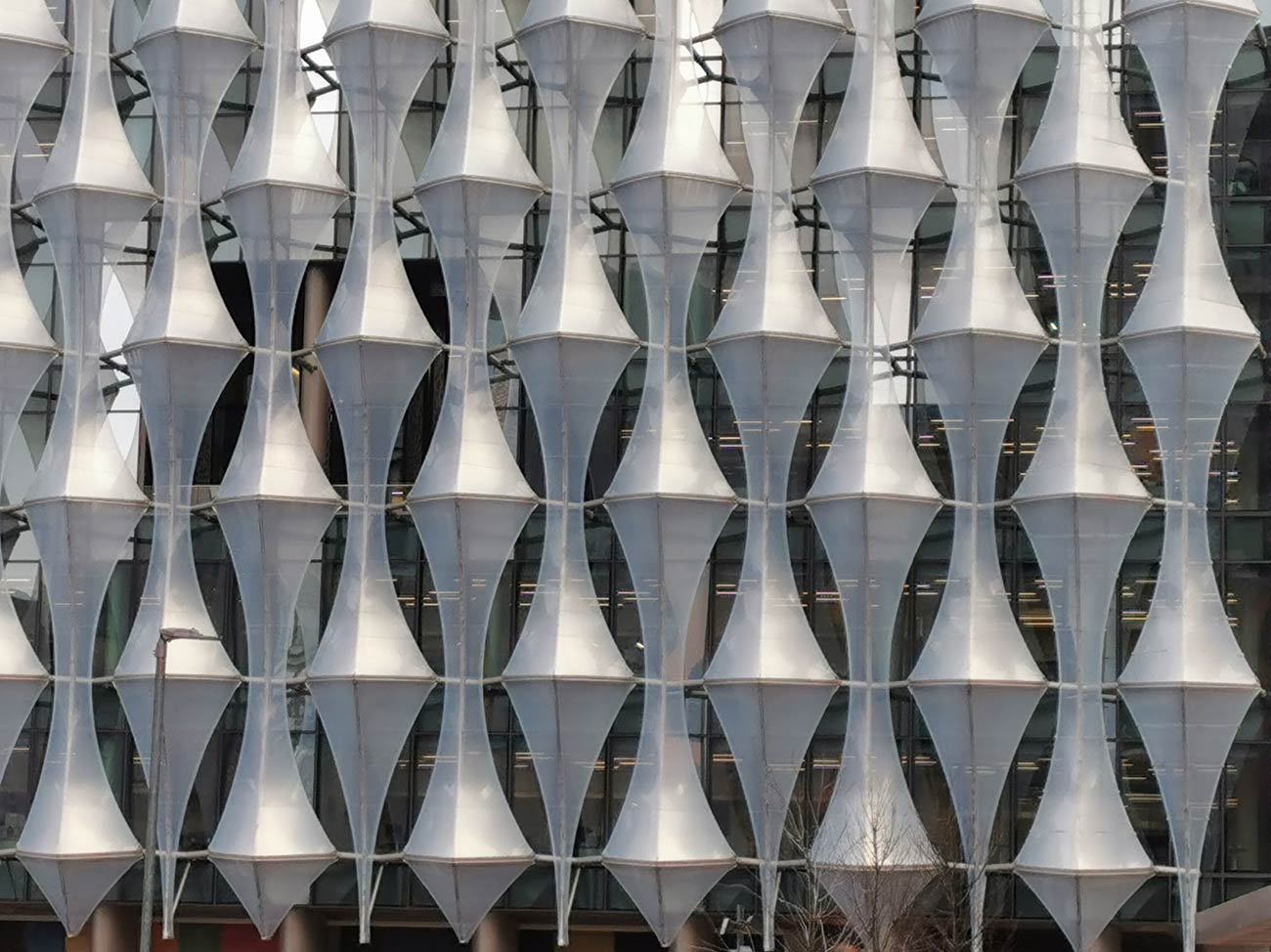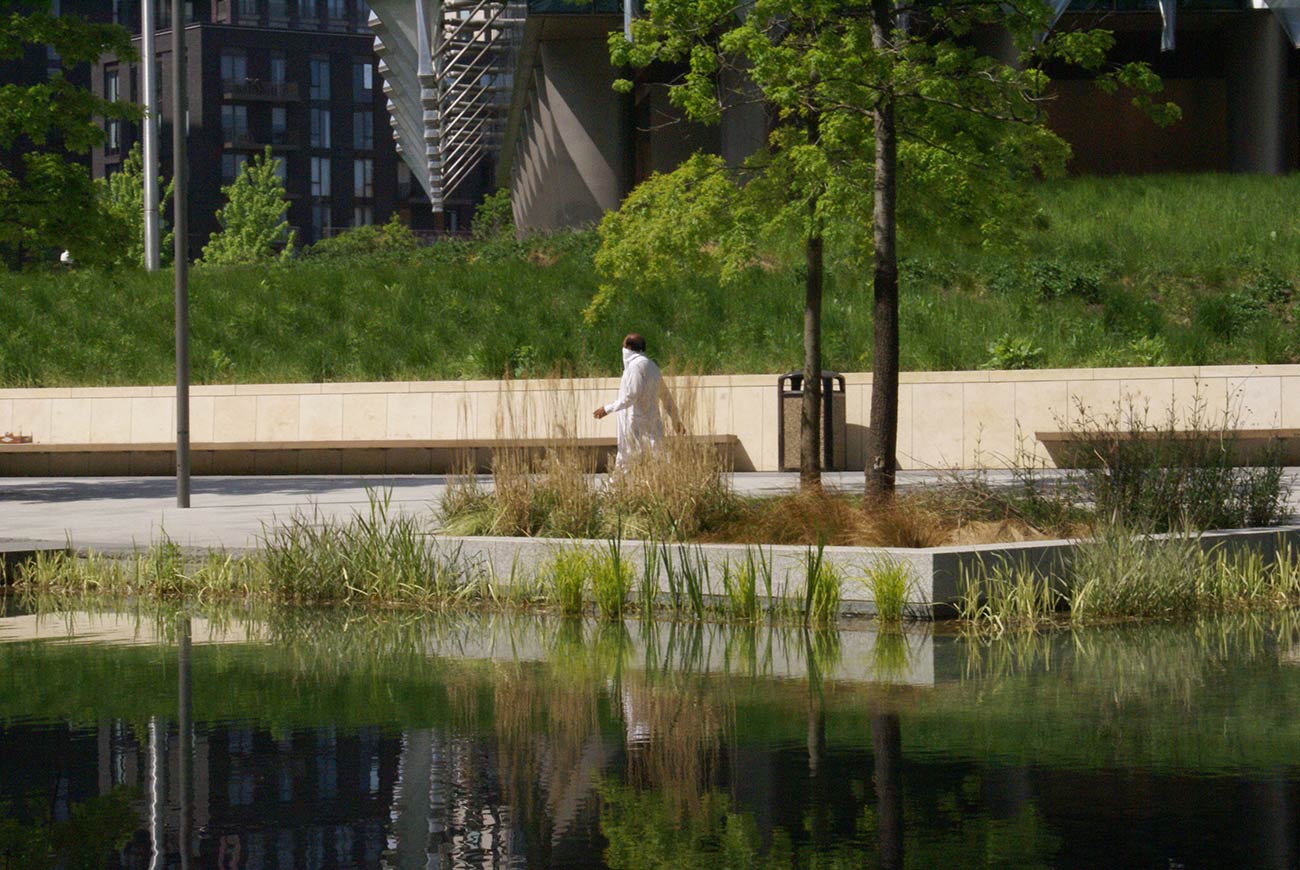
US Embassy Water Efficiency
The Nine Elms US Embassy building incorporates many water-efficiency systems
You didn’t used to need an umbrella in London, but in the last few years we’ve encountered some deluges that got more than your socks wet.
With the ever-growing crust of urban hard surfaces that don’t soak up rainwater, and multiplication of residential bathrooms, there is a pressing need for solutions that preserve fresh water and prevent overflowing sewers.
Amongst the Nine Elms US Embassy building’s many environmental features, its water efficiency systems aim to help tackle, and at least not make worse, the unpopular subject of wastewater. The pond on the Thames-side of the building not only provides a relaxing place to sit for a while; it is engineered to manage storm water, helping to prevent the sewers from becoming overwhelmed in the event of major rainfall. This is important because during floods, if rainwater cannot escape directly into the Thames, it mixes with water from bathrooms and washing machines and then requires treating at a huge cost. The pond also provides water for the gardens.

The building design, by Philadelphia architecture firm Kieran Timberlake, also incorporates a subterranean greywater treatment plant which produces water that can be reused in toilets, self-sufficiency in potable water via a deep-well aquifer, and roof rainwater collection.
Some have been less-than-complimentary about the building, but these creative approaches to nurturing our water resources may influence future developments for the better.
